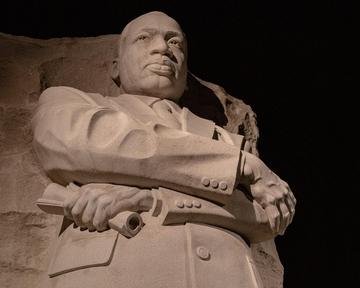Quiz Answer Key and Fun Facts
1. Following the American Civil War amendments were put in place in an attempt to ensure the rights of Black Americans. Among these amendments were the 13th, stating that slavery was to be abolished and the 15th, stating that the right to vote should not be denied.
Despite these apparent advances there were still laws in place which effectively separated blacks from whites. What were these laws known as?
2. As well as the restrictions on Black voters put in place by state governments, juries were dominated by whites. This allowed for the atrocities of white supremacist groups such as the Ku Klux Klan to go generally unpunished. What was the acronym for the group thought by the KKK to be superior?
3. For the situation to change, Blacks had to take action and white views had to change. One of the first Black activists prominent in the 1890s argued that blacks should become more economically useful. Many criticized this man, accusing him of being too willing to accept segregation as it stood. However, he did much to increase the educational opportunities for blacks in America. Who was he?
4. The early 20th century seemed to raise hopes for Black civil rights. The Depression brought together both Blacks and whites with poverty as a common issue, furthermore the anti-Fascist feeling in America during World War II made Americans look at the ways they treated one other. The appointment of Truman in 1945 seemed to pave the way for reform. What was the document presented by Truman after the shocking finds of the civil rights committee into violence against Blacks in 1946?
5. The election of President Eisenhower seemed to offer less hope than with his predecessor. Eisenhower viewed Black rights with suspicion. However, Eisenhower inadvertently helped Blacks by appointing a particularly liberal Republican as Chief Justice in the Supreme Court in 1953. Who was it?
6. Which legislation concerned the following events? A third grade student is not allowed into a nearby "white" school, so his father went to the Topeka branch of the NAACP. In 1953, lawyer Thurgood Marshall presented the case to the Supreme Court, resulting in the overturning of the Plessey v Fergusson ruling in 1954. What is the case called?
7. The Brown Ruling of 1954 faced fierce white resistance. Several white "citizens' councils" were formed, and by 1956 they had a quarter of a million members. They threatened businesses which complied with desegregation.
As well as white public opposition, there was action taken by Southern senators and congressmen. Which document signed in March 1956 stated that those who signed would continue to fight the Brown Ruling?
8. In 1955, the death of Emmett Till shocked many in America and was arguably the cause of the new Civil Rights Movement which followed. Some of the details of the murder were shocking and gruesome, especially the manner in which it was carried out, which left the body severely mutilated. What factor caused Emmett Till's murder to become a national issue?
9. The refusal of Rosa Parks to give up her seat for a white man led to the Montgomery bus boycott. However, it wasn't Parks herself who organized the boycott (as she was in jail).
Which two figures were the main organisers of the movement?
10. One of the most significant outcomes of the Montgomery Boycott was the strengthened status of Martin Luther King Jr. Which of these most accurately describes King's role in the boycott?
Source: Author
doublemm
This quiz was reviewed by FunTrivia editor
bloomsby before going online.
Any errors found in FunTrivia content are routinely corrected through our feedback system.


